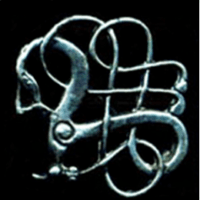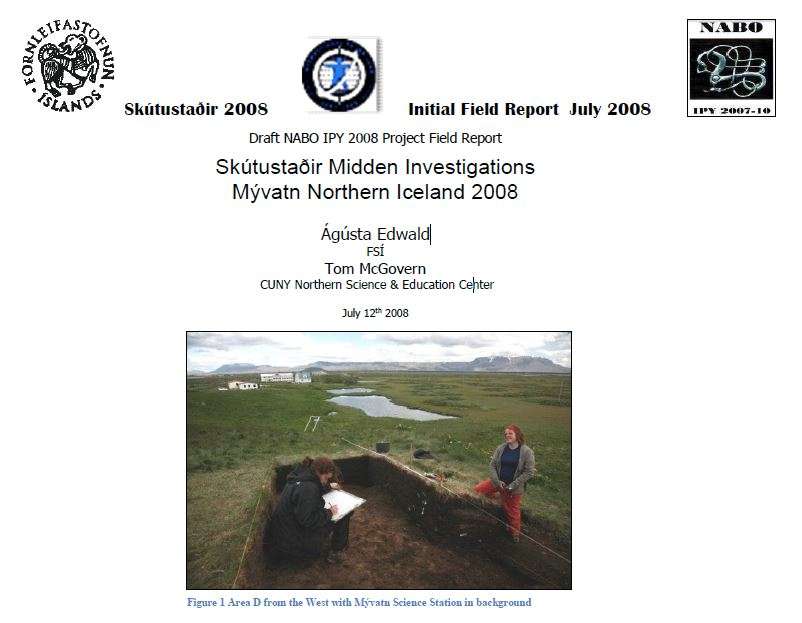- Version
- Download 558
- File Size 0.00 KB
- File Count 1
- Create Date 12 July 2008
- Last Updated 27 September 2023
Skútustaðir Midden Investigations Mývatn Northern Iceland 2008
In June-July 2008 an international team (led by Ágústa Edwald FSÍ and Tom McGovern CUNY) conducted initial investigations of stratified midden deposits associated with the historic site of Skútustaðir in Mývatn in NE Iceland. The project is part of a larger NABO (North Atlantic Biocultural Organization) and IPY (International Polar Year) program Human Ecodynamics in the North Atlantic, which works to coordinate international interdisciplinary projects in the Shetlands, Faroes, Iceland, and Greenland (see www.nabohome.org). In 2007 a joint FSÍ/CUNY NABO team visited Skútustaðir following the discovery of a patch of eroding midden by Arni Einarsson (Mývatn Science Station). Soil coring indicated up to 2.5 meters of cultural deposit in the grass covered slope extending southwards from the modern farm and church buildings. The 2008 investigations followed up on the 2007 results with a set of test trenches intended to test organic preservation, locate possible volcanic tephra horizons and datable patches of cultural deposit, and to recover an initial sample of artifacts and ecofacts. The 2008 season successfully located multiple tephra horizons (from V 1717 to the Landnám sequence of 871 +/-2), several of which can be followed over large areas. The three test units (D, E1&2, F) produced midden deposits with excellent organic preservation. Artifacts recovered and observed tephra indicate that the deposits sampled in D extend from ca. 1717-1477, E1 & 2 have an early Viking Age deposit directly upon the Landnám surface, and F revealed a very rich 18th-19th c midden deposit and an unexpected structural wall. Ninety finds were registered, ranging from 19th c cream ware to a Viking Age glass bead; 74 bags of well preserved animal bone and bird egg shell were recovered, and 54 samples for archaeobotany, insects, and radiocarbon were collected. A large scale systematic coring program allowed rough mapping of midden deposits and planning for placement of 2009 units. A very successful collaboration was continued for a second season with the Hið Þingeyska fornleifafelag; local Archaeological Association and the Litlulaugaskóli Fornleifaskóli barnanna/ Kids’ Archaeology program. There is great potential at Skútustaðir for further archaeological investigation, education, and outreach.






Share this: